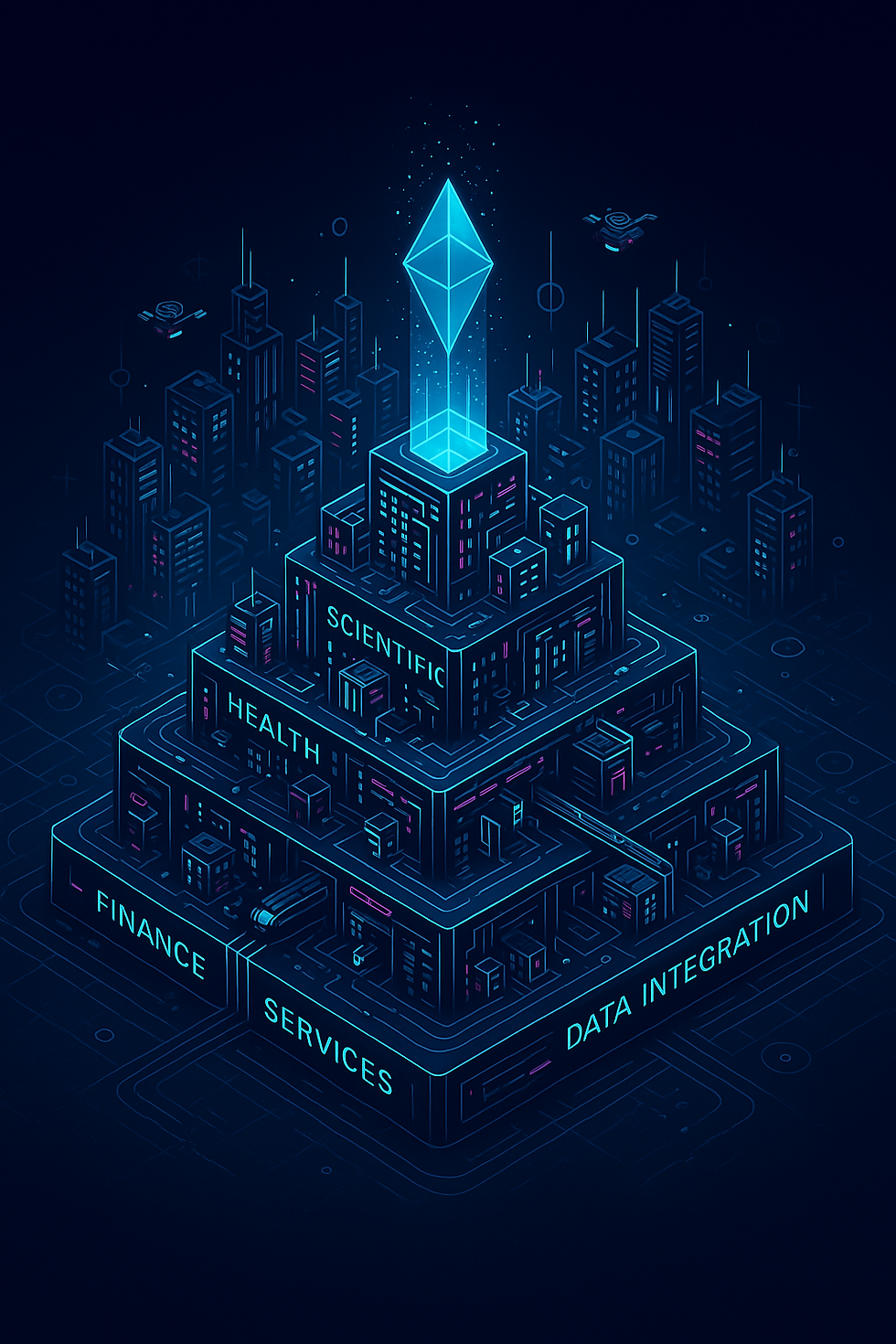semarx

Empowering Autonomous Intelligence with Entanglement Learning
Build Self-Aware, Adaptive AI Systems with Information Digital Twins
Our core service is the design and deployment of Information Digital Twins (IDTs) that enable AI systems to monitor and optimize their information throughput with the environment in real time. Each IDT is tailored to the domain, using our expertise in state–action modeling and information-optimized discretization. We manage the full implementation lifecycle—from system assessment to architecture design, integration planning, and performance validation.

From Theory to Deployment: Implementation-Ready IDT Architecture for Real-World AI
From Theory to Application
Entanglement Learning (EL) is more than a framework—it’s a new way to architect intelligent systems. At its core is the Information Digital Twin (IDT), a non-intrusive layer that enables AI to monitor and optimize its own information flow in real time.
While EL is not yet a commercial product, it provides a complete set of architectural methods, mathematical tools, and system-level algorithms ready for implementation. We've developed this foundation to accelerate the integration of IDTs into real-world systems—from robotics and control to perception, simulation, and beyond.
To bring this vision to life, we're seeking implementation partners who can apply EL in their specific domains. We don’t build vertical solutions ourselves—we focus on making the IDT architecture reliable, generalizable, and domain-agnostic.
We also welcome research collaborations across the domains listed below, e.g., complex systems, and adaptive physics—advancing both EL’s foundations and its applications


Information as Universal Currency
We bring the architecture and expertise to embed self-alignment into your AI systems
We are information architects, specialized in designing and deploying Information Digital Twins (IDTs)—a non-intrusive architecture that enables real-time, self-monitoring intelligence.
Our offering includes:
-
System Assessment – Understanding your environment, data flows, and model architecture
-
IDT Design – Structuring mutual information tracking across state–action–outcome cycles
-
Integration Support – Embedding the IDT into your system without disrupting operations
-
Metric Calibration – Implementing ψ, Λψ, and μψ based on your system’s structure and granularity
-
Adaptive Feedback Design – Generating information gradients that guide system alignment in real time
Our focus is not on building your AI—but on making it adaptable by design.


A Focused Architecture. An Open Invitation.
We architect the core. You shape the future
We don’t build end-user applications, vertical solutions, or commercialization platforms. Our role is upstream—we develop the core architecture that makes intelligent systems adaptable by design.
We partner with organizations who bring domain expertise, infrastructure, and real-world needs—and who are looking for a new way to enable autonomy.
Whether you're applying AI in healthcare, robotics, energy, finance, or infrastructure—if your systems need to learn, adapt, and stay aligned in real time, we invite you to explore what Entanglement Learning and the IDT architecture can unlock.
Scaling EL for Complex Systems
Multi-agent adaptation built on shared information flow
We also support the development of hierarchical, multi-modal IDT architectures—where multiple IDTs monitor different subsystems and report to a higher-level coordinator.
This structure enables localized adaptation with global coherence, making EL scalable across multi-agent systems and complex human–machine collaboration.
at extends the IDT from standalone implementation to platform-level integration across distributed, interdependent systems.

Additional EL Application Domains

Just as a universal genetic code enabled cells to share instructions and gave rise to multicellular life, Entanglement Learning provides a common “information language” for AI.
Today’s humanoids remain awkwardly stitched-together—each module speaking its own dialect. EL wraps each component in an Information Digital Twin, translating vision, planning, and control outputs into standardized information metrics.
With a single, shared substrate—measured in bits—modules coordinate seamlessly, spawning capabilities no bespoke interface could achieve. In this new paradigm, robotics systems can evolve ever-greater sophistication without the integration bottlenecks that once held them back.
Economically, a unified information code slashes integration effort and lowers the barrier to entry for building complex humanoids, democratizing innovation and accelerating industry growth.
Financial Trading Systems
Current State: Algorithmic trading systems employ predefined strategies optimized for specific market regimes, requiring human intervention to detect and adapt to fundamental market dynamics shifts.
Key Challenges: Unpredictable regime changes without clear boundaries; adversarial market behaviors; high-dimensional correlation structures that evolve rapidly.
IDT Implementation: A financial IDT would monitor information throughput between market signals and trading outcomes, detecting subtle changes in information relationships that precede major strategy failures and adaptively adjusting model parameters to maintain performance through volatile market transitions without manual reconfiguration.


Autonomous Supply Chains
Current State: Current supply chain optimization employs static demand forecasting and inventory models that require manual reconfiguration when faced with significant disruptions or pattern shifts.
Key Challenges: Complex interdependencies between manufacturing, logistics, and consumer demand; seasonal and trend-based distribution shifts; high-dimensional optimization constraints.
IDT Implementation: A supply chain IDT would measure information throughput across multi-echelon inventory systems, detecting misalignments between forecasting models and emerging demand patterns to guide targeted parameter updates that maintain operational efficiency during transitions without requiring complete model rebuilding.
Smart Grid Management
Current State: Power management systems rely on historical pattern recognition and static optimization models that struggle to maintain stability under increasing renewable energy variability.
Key Challenges: Non-stationary load and generation patterns; cascading effects across interconnected systems; critical need for continuous reliability despite infrastructure changes.
IDT Implementation: A grid-focused IDT would maintain an information-theoretic model of energy flow relationships, continuously measuring mutual predictability across the network to detect emerging instabilities before traditional indicators, enabling preemptive rebalancing through targeted control parameter adjustments that maintain system-wide coherence.


Physical Systems Analysis and Prediction
Current State: Complex systems like the double pendulum are traditionally modeled with differential equations that become unstable in chaotic phases, requiring expert knowledge and high-cost simulations to analyze their behavior.
Key Challenges: Unpredictability during chaotic transitions; difficulty maintaining control across dynamic regimes; inability to detect structure in apparent randomness; absence of universal metrics for model-system alignment.
IDT Implementation: A physics-focused IDT shifts the approach from state prediction to information tracking. By monitoring entanglement between energy distributions and transitions, the IDT uncovers persistent information patterns even in chaotic motion, enabling adaptive responses that maintain coherent energy relationships rather than precise state trajectories.